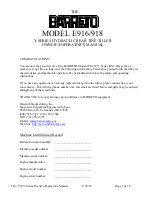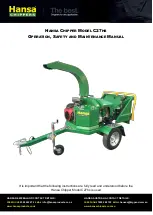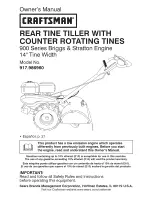
RLC-SVX14H-GB
61
Installation – Electrical
CAUTION Evaporator Damage!
The RTWD units do NOT require evaporator pump
control. All systems with a remote condenser REQUIRE
chilled water pumps must be controlled by the Trane
CH530 to avoid catastrophic damage to the evaporator
due to freezing. The relay output from 1A14 is required
to operate the Evaporator Water Pump (EWP) contactor.
Contacts should be compatible with 115/240 VAC control
circuit. The EWP relay operates in different modes
depending on CH530 or Tracer commands, if available,
or service pumpdown (See maintenance section).
Normally, the EWP relay follows the AUTO mode of
the chiller. Whenever the chiller has no diagnostics
and is in the AUTO mode, regardless of where the auto
command is coming from, the normally open relay is
energized. When the chiller exits the AUTO mode, the
relay is timed open for an adjustable (using TechView) 0
to 30 minutes. The non-AUTO modes in which the pump
is stopped, include Reset (88), Stop (00), External Stop
(100), Remote Display Stop (600), Stopped by Tracer
(300), Low Ambient Run Inhibit (200), and Ice Building
complete (101).Regardless of whether the chiller is
allowed to control the pump on a full-time basis, if the
MP calls for a pump to start and water does not fl ow,
the evaporator may be damaged catastrophically. It is
the responsibility of the installing contractor and/or the
customer to ensure that a pump will start when called
upon by the chiller controls.
Table 20 - Pump Relay Operation
Chiller mode
Relay operation
Auto
Instant close
Ice building
Instant close
Tracer override
Close
Stop
Timed open
Ice complete
Instant open
Diagnostics
Instant open
Note: Exceptions are listed below.
When going from Stop to Auto, the EWP relay is
energized immediately. If evaporator water fl ow is
not established in 4 minutes and 15 sec., the CH530
de-energizes the EWP relay and generates a non-
latching diagnostic. If fl ow returns (e.g. someone else is
controlling the pump), the diagnostic is cleared, the EWP
is re-energized, and normal control resumed.
If evaporator water fl ow is lost once it had been
established, the EWP relay remains energized and a
non-latching diagnostic is generated. If fl ow returns, the
diagnostic is cleared and the chiller returns to normal
operation.
In general, when there is either a non-latching or
latching diagnostic, the EWP relay is turned off as
though there was a zero time delay. Exceptions
(see above table) whereby the relay continues to be
energized occur with:
A Low Chilled Water Temp. diagnostic (non-latching)
(unless also accompanied by an Evap Leaving Water
Temperature Sensor Diagnostic)
or
A starter contactor interrupt failure diagnostic, in which
a compressor continues to draw current even after
commanded to have shutdown
or
A Loss of Evaporator Water Flow diagnostic (non-
latching) and the unit is in the AUTO mode, after initially
having proven evaporator water fl ow.
Alarm and Status Relay Outputs
(Programmable Relays)
A programmable relay concept provides for enunciation
of certain events or states of the chiller, selected from a
list of likely needs, while only using four physical output
relays, as shown in the fi eld wiring diagram. The four
relays are provided (generally with a Quad Relay Output
LLID) as part of the Alarm Relay Output Option. The
relay’s contacts are isolated Form C (SPDT), suitable
for use with 120 VAC circuits drawing up to 2.8 amps
inductive, 7.2 amps resistive, or 1/3 HP and for 240 VAC
circuits drawing up to 0.5 amp resistive.
The list of events/states that can be assigned to the
programmable relays can be found in Table 20. The
relay will be energized when the event/state occurs.
















































